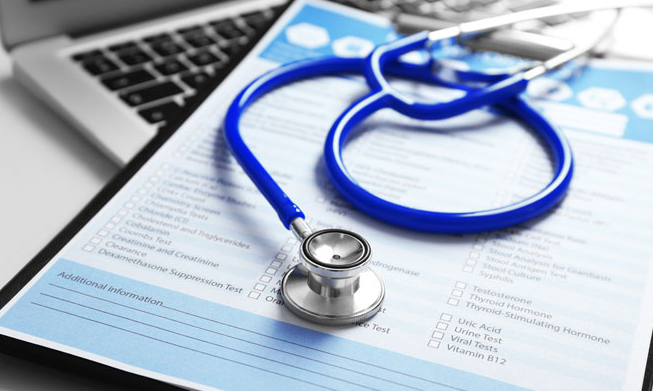Table of Contents:
- Understanding Medical Evidence
- Role in Legal Claims
- Significance in Insurance Claims
- Gathering Reliable Medical Evidence
- Presenting Evidence Effectively
- Challenges and Solutions
- Collaborating with Legal and Medical Experts
Understanding Medical Evidence
Medical evidence plays an indispensable role in both legal and insurance claims. It provides the factual basis to support claims, ensuring validity and increasing the chance of favorable outcomes. Medical evidence encompasses records, diagnostic results, expert testimonies, and other documentation verifying a medical condition. Such evidence is a foundational element when filing VA medical claims, where accuracy and comprehensiveness are critical.
Detailed medical evidence makes it possible to substantiate claims that might otherwise be dismissed or disputed. By clearly demonstrating the existence and extent of medical conditions, claimants can provide concrete proof of the issues, which is crucial in legal and insurance contexts. When meticulously gathered, this evidence can offer clarity and validation for claims, underscoring the importance of precision and thoroughness.
Role in Legal Claims
In the legal arena, medical evidence is crucial for establishing truth and justice in cases involving personal injury, malpractice, and disability claims. The strength of a legal case often hinges on the ability to present clear, convincing medical evidence that supports a plaintiff’s assertions, whether it concerns the extent of injuries or the impact on one’s quality of life. Lawyers and claimants rely on this evidence to demonstrate causation and fault, often influencing the outcome of a case.
Moreover, medical evidence helps the court assess damages and appropriate compensation by providing objectivity and consistency in evaluating the severity and implications of medical conditions. Therefore, the strategic use of medical documentation and expert opinions is pivotal in achieving successful legal resolutions.
Significance in Insurance Claims
Medical evidence is just as critical in insurance proceedings. Insurers require thorough documentation to verify the legitimacy of health issues, accidents, or long-term care claims. Medical evidence substantiates the cause, extent, and prognosis of the claimant’s condition, influencing coverage and compensation decisions.
For claimants, the ability to present comprehensive medical records can significantly affect how an insurance company evaluates and processes their claims. Detailed evidence helps bridge communication gaps, allowing insurers to make informed decisions based on the objective facts presented. Proper documentation also accelerates the claims process, leading to quicker resolutions and reduced disputes between claimants and insurers.
Gathering Reliable Medical Evidence
Collecting reliable medical evidence is fundamental yet challenging. It begins with obtaining detailed medical records from healthcare providers, including diagnosis documents, treatment plans, and follow-up notes that comprehensively view the patient’s condition. Consistency and clarity in records enhance their reliability, leading to strong case support.
Additionally, expert medical testimonials are often sought to provide professional insights and interpretations of medical records. These testimonials can bridge the gap between complex medical data and the understanding required within legal or insurance contexts, reinforcing the credibility of the evidence presented. This thorough approach to evidence collection is crucial, as discrepancies or omissions may undermine the legitimacy of a claim.
Presenting Evidence Effectively
Once collected, the next critical step is effectively presenting medical evidence. The clarity of presentation can significantly impact how evidence is perceived and understood, whether in a courtroom or by an insurance adjuster. Proper organization and methodical presentation ensure that the information conveys the intended narrative clearly to the decision-makers involved.
Visual aids such as charts, timelines, and summaries can further enhance the comprehensibility of complex medical data. The goal is to present evidence in a factual and compelling manner, addressing every aspect of the claim while preemptively answering potential questions from legal opponents or insurance assessors.
Challenges and Solutions
The utilization of medical evidence is not without its challenges. Discrepancies in records, loss of documents, and differing medical opinions can pose significant hurdles. Overcoming these challenges requires diligence in record-keeping and a proactive approach to addressing inconsistencies as they arise.
One solution is to engage experts who can clarify complex medical details and provide an influential testimony regarding the evidence’s accuracy and relevance. Additionally, using databases to store detailed digital records safely can prevent the loss or damage of crucial documents, ensuring that all critical evidence is readily available when needed.
Collaborating with Legal and Medical Experts
Collaboration between legal and medical experts is often vital when dealing with intricate claims. Lawyers benefit from consultant experts who can decode sophisticated medical terminology and validate evidence, highlighting its pertinence to the case. Similarly, medical professionals can gain insights into their documentation’s legal ramifications and requirements, ensuring they provide thorough and actionable evidence.
This collaboration ensures a well-rounded approach to claims, merging the intricacies of medical science with the precision of legal strategies. This synergy is crucial for navigating the multifaceted issues in complex cases, providing the strongest case for claimants seeking just outcomes.

